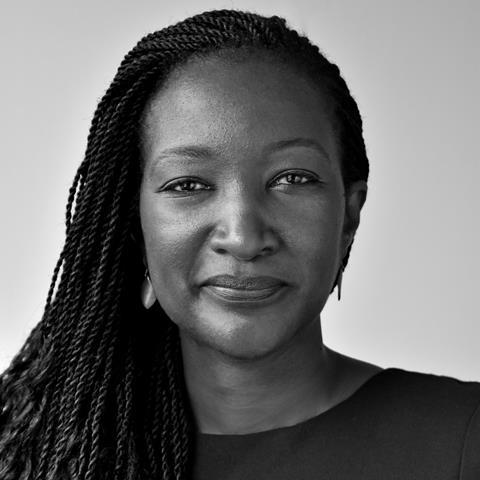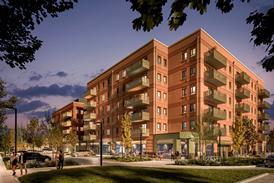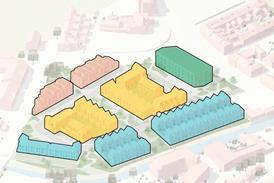Former colleagues of the leading Ugandan architect remember her generosity and her passionate belief in Africa’s ability to generate its own architectural discourse
I met Doreen Adengo while living in Kampala in 2017. She had studied in the United States at Yale, had been a teaching fellow to Vincent Scully and later worked briefly for Adjaye Associates, before joining the practice of Robert Stern, Yale’s then dean of architecture. As outlined below, her teaching credentials were extensive and she was widely liked and admired.
At this point she had already established her own practice in Kampala. She spoke to me about her her desire to help shape the built environment of her homeland. As well as being deeply knowledgable about the urban history of the city, she had a firm grounding in the practice of architecture.
One of her greatest frustrations was being appointed on a project, only to be sidelined as soon as the client had found a contractor. Although committed to teaching and research, she also wanted to build. But her legacy as a passionate advocate for architecture will live on through her work and the countless people whose lives she touched and influenced.
Ben Flatman, Architectural Editor

Doreen Adengo (1976-2022)
Our colleague and friend Doreen Adengo passed away on 22 July, 2022. Born in Uganda in 1976, Doreen was at the forefront of a new generation of architects shaping the future of the built environment based on an engagement with everyday life in African towns and cities.
After working for design firms in London, Washington DC, and New York, Doreen returned to Kampala to establish Adengo Architecture in 2016 driven by an ambition to challenge the narrative of architects as bakubi ba plan, (literally, “drawers of plans”) by developing innovative and affordable design concepts informed by the needs and imaginations of urban African residents.
Here we reflect on the legacies of Doreen’s work in architecture and beyond.
What are your first memories of Doreen and her work?
William Monteith I first met Doreen in 2013 while conducting ethnographic fieldwork in Nakasero market in Kampala. I was researching the social and material infrastructures of the market and the ways in which these were (de)valued in urban development plans.
Doreen was interested in the idea of the market as an infrastructure shaped by broader histories of colonial and indigenous urbanism in Kampala and generously shared a collection of historical photographs. More broadly, we shared an interest in urban design and planning in the context of rapid urbanisation.
How do over three million people live and work in a city originally designed for 20,000? What does affordable and inclusive architecture look like in such contexts? And who designs and builds for those living and working in informal economy?
Doreen was developing plans for affordable housing in Kampala’s wetlands and, like me, was interested in learning about urban density and creativity from the market. She was committed to designing concepts for people residing at the bottom, as well as the top, of Kampala’s hills, and returned to Nakasero market several times as part of architectural exchange programmes in recent years.
Nina Peters I was looking for an internship after a stay at Uganda Martyrs University and found Adengo Architecture via Google. I wrote to Doreen and she arranged a video call. I was immediately impressed with her personable and joyful nature and the projects she was pursuing in Uganda.
She was committed to addressing local urban and architectural challenges while being connected to global debates. Doreen had just established the firm in Uganda and there was no real office space yet. We worked at home and at Endiro Café in Kisementi.
We stayed in touch after my internship and worked on various projects together. Doreen established an office at Kampala Design Hub before moving to larger premises on Jinja Road. Her passion for architecture and ambition to pursue her vision impressed me no end.
Randi Karangizi Doreen Adengo was the first Ugandan architect I met in Kampala during a period of fieldwork for a university project in architecture. She was welcoming, open and willing to share her experiences of working as an architect in the country.
At the time Doreen was planning a Kampala-based workshop in preparation for the African Mobilities exhibition – an initiative that brought together different creative practitioners across Africa to explore alternative ways of interpreting urban realities around them.
Doreen invited me to participate in the workshop and present my own design and research project to other students involved in the event. She was always very generous of her time in support of student projects and her input enriched my work and time in Uganda.
Franklin Kasumba I first met Doreen at the African Modernism workshop she organised in 2018 as part of a group of young architects and photographers that came together to document post-colonial building projects in Kampala. The workshop demonstrated her commitment to collaborating with those outside the field of architecture by ensuring the perspectives of photographers were included throughout. I joined her office at the end of that year.
What were your experiences of working with Doreen?
NP I associate working with Doreen mainly with learning from each other – in many different ways. One of Doreen’s major concerns was that planning should meet the needs of the local population and be easy to implement, whether in housing projects, urban planning or any other type of project.
It was very important to her that local knowledge about culture, climate, economy and construction be incorporated throughout. At the same time, she created a working culture in which international employees were included and encouraged to share their ideas and experiences.
Doreen was also committed to interdisciplinary work. In her projects there was always the key question: what combination of methods are best placed to understand and visualise complex urban issues? Doreen was positive, passionate and professional and always open to new ideas. She was a great teacher and leader.
FK In the office, Doreen was a mentor and a friend who allowed us to explore different ways of coming up with design and research outputs for the different projects we worked on. She was also kind and invested in the professional growth of her employees; she encouraged us to explore different ways of improving our work and our professional growth. At the same time, she upheld the high standards of professionalism, communication and dedication required by a young practice.
WM Doreen’s growing international recognition was reflected in her commission by the African Mobilities exhibition at the Architekturmuseum in Munich in 2017. I had recently finished a research project on urban refugees in Kampala and she was interested in collaborating on a project exploring the geographies of the kitenge (wax fabric) trade from the perspective of Congolese traders.
Doreen brought together a diverse team of architects, photographers and social scientists; one of our first challenges was to establish a common language with which to articulate the story of kitenge in Kampala. Doreen’s passion and professionalism was key to the success of the project.
She was always supportive of the ideas of different contributors – including those of students and self-trained photographers in Kampala – while holding us all to the highest standards. I was blown away by the final exhibition, which combined representations from photography, cartography and architecture to illustrate the impact of the kitenge trade on the social and material infrastructures of the city.
RK I joined Doreen’s African Mobilities exhibition team in 2018. At the time I was based in Cambridge, UK, and we collaborated remotely. Doreen guided and coordinated with our team well; throughout the project she would get our input and share progress continuously.
As a team, we finally got to meet together in person at the exhibition in Munich. It was a great experience to witness the unveiling of the project together, but also explore and learn about work ongoing in other African cities.
I have continued to be inspired by Doreen’s passion and enthusiasm for architecture and her collaboration with professionals in other fields.
What do you think are the most important legacies of Doreen’s work?
RK Doreen played a fundamental role in shaping the field of architectural research and design in Uganda. She studied and worked abroad for a number of years and had unique international experiences, but it was clear that she was passionate about working in and with Uganda’s urban context.
Doreen’s commitment to documenting Kampala’s history, exploring ways that city dwellers adapt and live and aspiring towards a better future for the city will always be remembered. By regularly including students in her work, she built an important platform for various students to be involved in telling narratives and imagining new realities for their own cities. Doreen opened doors for us to transform the future of Ugandan cities.
FK Her work will live on through those she interacted with in academia, practise and advocacy. One of Doreen’s key legacies is the number of women she has inspired in the creative industry in Uganda and beyond. In 2019, she was named by Archdaily as one of 31 black women architects forging the future of architecture.
NP Doreen advocated for a humane architecture which can transform society. With the foundation of the furniture company Made in Kampala, she demonstrated that high-quality, affordable furniture can be made locally from local materials in Uganda, rather than imported from overseas.
She lobbied for large international construction projects in Uganda to include local architects, who understand local needs and contexts.
She was committed to interdisciplinary practice, which in projects such as 3x3 can showcase Ugandan innovations to international audiences. Furthermore, she was committed to communicating across generations through projects including Kampala Exchange. I will miss Doreen terribly.
WM Doreen’s work has received acclaim around the world – as evidenced most recently by her celebrated contribution to David Adjaye’s Summer Exhibition at the Royal Academy in London. However, her most important legacies are in Uganda.
When she established Adengo Architecture in 2015, Doreen was one of only 178 registered architects in the country. Her vision was not only to establish the firm but to develop architecture as a discipline and professional practice in Uganda.
In addition to being a uniquely talented architect, Doreen was a wonderful teacher and mentor to students at the New School, Pratt Institute, the University of Johannesburg and Uganda Martyrs University.
She introduced a new generation to a socially responsible architecture which sought to respond to local challenges by combining innovative design with local materials. Doreen transformed the possibilities of what architecture can be for students, planners and citizens in Uganda and beyond.

Postscript
Nina Peters is an architect at Adengo Architecture and ZUsammenKUNFT Berlin eG; and also co-founder of Made in Kampala
Franklin Kasumba is a graduate architect at Adengo Architecture
Randi Karangizi is a graduate architect at Localworks in Kampala
William Monteith is Senior Lecturer in the School of Geography at Queen Mary University of London
















No comments yet